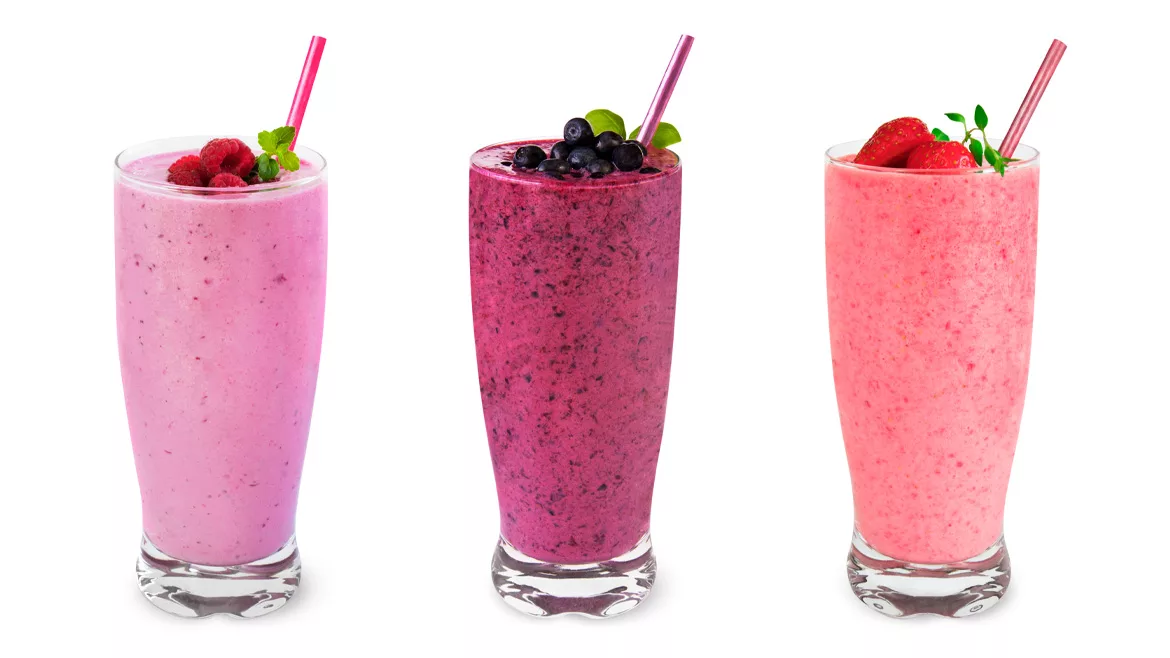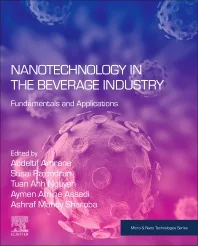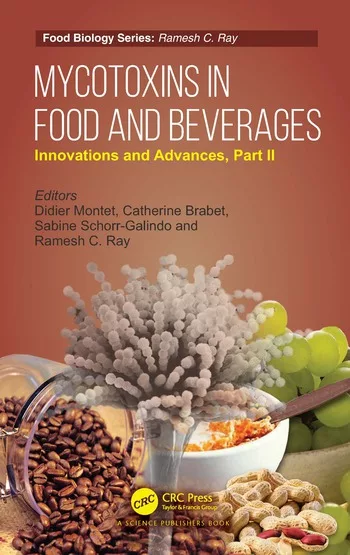Ingredient Spotlight
Functional, health trends call for masking agents
Masking ingredients and bitter blockers address off-notes

(Image courtesy of Getty Images/ma-k)
Trends have the unique ability to breathe new life into any category. However, innovation often comes with a price.
In the beverage arena, formulators must go toe to toe with new trends to maintain the integrity of their products. Current trends for health-and-wellness, plant-based, reduced-sugar and functional beverages, for example, easily can affect the taste, mouthfeel and overall beverage experience. Thus, beverage formulators engage masking ingredients to fight off any unwanted effects.
The Undesirables
Undesirable off-notes are found in the ingredients that make up many of the most in-demand trends. For example, beverages that support mental and physical health are trending, notes Smaro Kokkinidou, principal food scientist at Cargill Inc., Minneapolis. However, the ingredients that support these trends — vitamins, minerals, antioxidants, caffeine, L-theanine, chamomile and ashwagandha — also might incite bitterness, astringency, earthy and chalky attributes, and metallic notes in a beverage, she explains.
“Further, consumer demand for plant-based proteins is also rising, and these too often come with flavor challenges,” Kokkinidou adds. “For example, pea, chickpea and fava bean proteins are increasingly popular but tend to come with bitter, beany, vegetative, earthy and/or dry hay notes.”
To address these issues, beverage-makers must work with an ingredient supplier to mask the undesired attributes. After all, if a beverage doesn’t taste good, it’s likely the consumer won’t buy it again.

Image courtesy of Ingredion Inc.
“Brands have plenty of opportunities to grow in the functional beverage space, but the products must taste great for repeat purchases,” says Casey McCormick, vice president of global innovation at Sweegen Inc., Rancho Santa Margarita, Calif. “Brands that tread in the wellness-supporting space should prioritize taste while seeking to make better-for-you foods.”
Functional CBD-infused beverages also are being affected, notes Colleen Roberts, director for Flavor Dynamics Inc., South Plainfield, N.J.
Roberts says she has noticed an increase in demand for masking agents for a variety of CBD-infused beverages. In general, the company is seeing increased popularity of functional ingredients, which call for masking ingredients to correct any off-notes, she adds.
In the past, beverage-makers might have turned to sugar as a masking agent. However, with consumers doubling down on health-and-wellness beverages, manufacturers must find other options, suggests Sweegen’s McCormick.
“Sugar is a wonderful masking agent,” he says, “but consumers are looking to ditch the calories in their refreshment and nutritional quest. That means brands have to find creative ways to reduce or replace sugar while masking functional ingredients.”
Unfortunately, reducing sugar or replacing it with a zero-calorie alternative often complicates a beverage’s formulation, suppliers note.
“The most common issues that natural and zero-calorie sweeteners face are delayed sweetness, lingering sweetness, and a bitter, metallic, licorice or herbal off-taste,” explains Philip Caputo, marketing and consumer insights manager for Virginia Dare, Brooklyn, N.Y. “Our customized masking systems selectively mask off-tastes, allowing the perception of positive flavor attributes.”

Image courtesy of PlantBaby
In particular, natural high-intensity sweeteners like stevia and monkfruit can impart off-notes, explains Heather Young, account manager for Mother Murphy’s Flavors, Greensboro, N.C. To neutralize these off-notes, the company offers bitter blockers and masking agents in liquid and dry forms.
“Some offer added upfront sweetness and work seamlessly with reducing stevia off-notes, while others provide no added sweetness and work effectively at blocking off-notes from plant-based proteins and/or vitamin, mineral or nutraceutical off-notes,” Young explains.
Cargill’s newest offering, EverSweet + ClearFlo, combines the company’s stevia with a natural flavor to address the taste, flavor, mouthfeel, solubility and dissolution of a beverage, Kokkinidou notes.
“On the flavor modification front, EverSweet + ClearFlo results in a more sugar-like experience, especially at higher concentrations, with a sweetness profile that is even closer to sucrose,” she explains. “At the same time, it helps manage off-flavors from other ingredients used in formulation, including earthy and beany notes from plant-based proteins, bitterness from caffeine or vitamins, or metallic tastes from potassium chloride or other minerals. In addition, it enhances characterizing flavor profiles, including light, fruity notes and rich chocolatey tones.”
The sweetener system also helps with mouthfeel, especially in no-sugar-added formulations, Kokkinidou adds.
Also addressing low- or reduced-sugar trends, Sweegen offers bitter-blocking technology that can help beverage-makers reduce or replace sugar and mask 80-100% of bitterness depending on the formulation, McCormick says.
Importantly, many of these masking ingredients can be labeled “natural flavor.” This is an important distinction as many consumers seek clean labels, suppliers add.
“The bitter-blocking landscape is moving away from synthetic compounds to natural, clean-label options,” Sweegen’s McCormick says.
Choosing the Right Masking Agent
Although many masking options exist, there is not an all-in-one solution, Sweegen’s McCormick notes. Instead, beverage-makers must work closely with a flavor company to find the appropriate masking ingredients.
“Beverage manufacturers must consider all the ingredients in a formula, as each can contribute to the overall experience of taste,” says Abbie Hohman, business development manager at Ingredion Inc., Westchester, Ill. “It is also essential to understand and define the desired flavor profile, determine which ingredients may need masking, and consider potential flavor changes when using flavors with modifying properties. It is a complex art and science as manufacturers experiment with different masking solutions.”
Virginia Dare’s Caputo affirms this, noting: “A single formulation does not fit all and likely includes a combination of off-taste masking, flavor profile enhancement and sweetness enhancement. We identify each of our customers’ unique taste objectives or challenges, collaborate to develop a comprehensive solution, and tailor our natural taste improvement ingredients to deliver preferred taste.”
It’s also important for beverage-makers to consider the full cost-in-use of their masking solutions, Cargill’s Kokkinidou notes.
“Flavor maskers often mute characterizing flavors, forcing developers to increase expensive characterizing flavors to compensate,” she explains.
The end goal is finding a masking solution that offers a neutral beverage profile and complements the finished product’s desired flavor profile, Kokkinidou says.
Future Changes
If emerging beverage trends have any say, masking ingredients will increasingly be in demand. Exotic flavors are gaining traction, along with antioxidants and botanicals that address functional claims, Virginia Dare’s Caputo notes.
As a result, beverage-makers will need to find a way to ensure these drinks taste good.
“The increase in demand to make functional, ‘better-for-you’ products more palatable has resulted in the research, development and utilization of natural ingredients, such as flavors with modifying properties,” Ingredion’s Hohman says.
Additionally, the desire for sustainable ingredients and immune-boosting products is not expected to slow, Mother Murphy’s Young suggests.
“There will always be a need for solutions to reduce off-notes and make these ingredients palatable and acceptable,” she says. “Therefore, bitter blockers and masking agents will certainly play a major role in the years to come as they provide formulators with the necessary and critical function of ‘cleaning up’ certain healthy ingredients so they can deliver on health and great taste.”
Furthermore, as suppliers develop new sweetening systems, there will be a greater demand for masking ingredients, Flavor Dynamics’ Roberts adds.
In addition to ingredient innovation, suppliers expect to see improvements in manufacturing.
Particularly, Sweegen’s McCormick says bioconversion and precision fermentation will enable the commercialization of new masking ingredients. The company also recently announced the commercialization of new technologies for the commercialization of sweet-tasting proteins brazzein and thaumatin.
Cargill’s Kokkinidou also sees potential in precision fermentation, noting that it could offer a more sustainable and economical approach to ingredient production.
“There’s also still much to learn about how different sensory inputs interact,” Kokkinidou says. “As we gain deeper insight into these cross-modal interactions using optimized sensory methodologies, we’ll be able to identify new types of flavor modifiers and maybe even create designer molecules leveraging precision fermentation that allow us to minimize negative attributes, enhance sweetness perception and improve overall sweetness dynamics.”
Looking for a reprint of this article?
From high-res PDFs to custom plaques, order your copy today!







